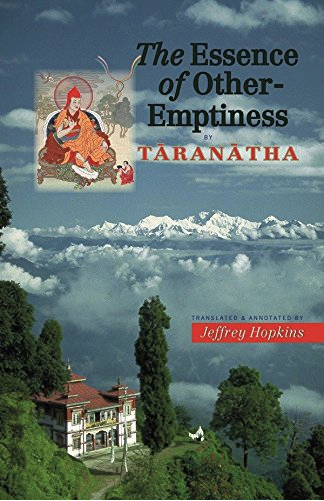No edit summary |
No edit summary |
||
| Line 24: | Line 24: | ||
**{{i|III. Clearing Away Extremes Imputed by Others|102}} | **{{i|III. Clearing Away Extremes Imputed by Others|102}} | ||
*{{i|Twenty-one Differences Regarding the Profound Meaning by Tāranātha|117}} | *{{i|''Twenty-one Differences Regarding the Profound Meaning'' by Tāranātha|117}} | ||
*{{i|List of Abbreviations|137}} | *{{i|List of Abbreviations|137}} | ||
*{{i|Bibliography|139}} | *{{i|Bibliography|139}} | ||
| Line 30: | Line 30: | ||
**{{i|2. Other Sanskrit and Tibetan Works|141}} | **{{i|2. Other Sanskrit and Tibetan Works|141}} | ||
|AddRelatedTab=No | |AddRelatedTab=No | ||
|ExtraCategories=Snow Lion Publications | |||
|StopPersonRedirects=No | |StopPersonRedirects=No | ||
}} | }} | ||
Latest revision as of 16:22, 28 August 2020
Jeffrey Hopkins continues his groundbreaking exploration of the Jo-nang-ba sect of Tibetan Buddhism with this revelatory translation of one of the seminal texts from that tradition. Whereas Dol-bo-ba's massive Mountain Doctrine authenticates the doctrine of other-emptiness through extensive scriptural citations and elaborate philosophical arguments, Taranatha's more concise work translated here situates the doctrine of other-emptiness within the context of schools of tenets, primarily the famed four schools of Tibetan Buddhism, through comparing the various schools' opinions on the status of the noumenon and phenomena. Also included is a supplementary text by Taranatha which presents the opinions of a prominent fifteenth-century Sakya scholar, Shakya Chok-den, and contrasts them with those of the leading Jo-nang-ba scholar Dol-bo-ba. (Source: Back Cover)
| Citation | Hopkins, Jeffrey, trans. The Essence of Other-Emptiness. By Tāranātha. Boston: Snow Lion Publications, 2007. |
|---|---|



